Recently, I suggested that Matthew Paris and other artists of the 14th gothic illuminations (which I have called the ‘School of St Albans’ after the town where Paris lived and worked) might be a model for the reestablishement of a liturgical style for the Roman rite, in the way that the Eastern Church so successfully reestablished the iconographic tradition for the Byzantine liturgy in the middle of the 20th century. Here.
One reader wondered if it would really be possible to adapt a style that is known largely as one for illumination (ie in books and on a small scale) to full-scale liturgical art. This was a very good point. I responded that I thought that it was possible and speculated as to how I might do it. Two people have seperately reminded me of the existence of wall paintings in British churches from the 15th and 14th centuries that bear the essential characteristics of the School of Saint Albans and perhaps demonstrate to artists today some way in which a modern style that comes out of this foundation might be done on a large scale. So, thanks to Deacon Lawrence Klimecki (my fellow blogger here at Beauty of Catholicism) and Gina Switzer for this (both of whom are working artists who are taking the Pontifex University Masters in Sacred Arts).
We have seen many of these images before on this site, but it wasn’t until recently I made the connection with the stylistic connection of the illuminations of the time. It is for this reason that I represent them. The most famous church is St Cadoc’s in Glamorgan in Wales.
So just to remind you here is an illumination of shepherds being informed of the birth of Our Lord:
What characterizes this style for me is the heavy emphasis on line to describe form (rather than tonal variation); restraint in the use of color so that often the surface that is painted on eg parchment – shows through and plays a part in the image; a higher degree of naturalism in the drawing than Romanesque or other iconographic art; but like iconographic art is lives in the plane of the painting – there is little perspective and depth in the image so that it has an other-worldly and symbolic feel to it.
Now here is St Cadoc’s in Wales and then some paintings from the interior.
What strikes me about this styles also is that they will be practically slightly easier to produce as wall paintings. An artist who know what he is doing could fresco or paint on panel such paintings quickly and easily and well. This will help to bring down costs for commission and increase sales for artists who are looking to make a living.
Here are two more from different churches in England. First St Catherine in the Church of St Peter and St Paul in Pickering, Yorkshire.
And the following are at St Mary, Lakenheath, Suffolk, England.

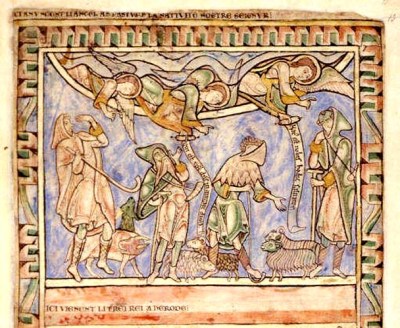
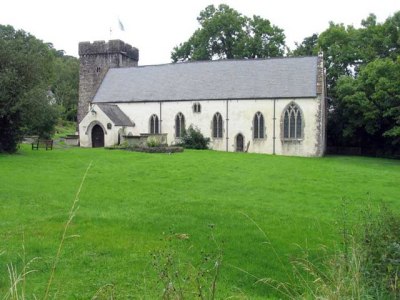

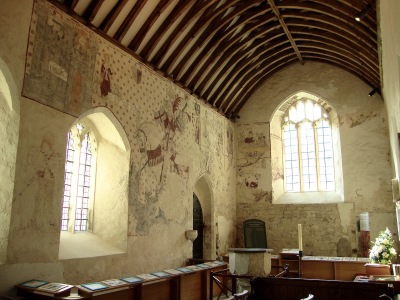
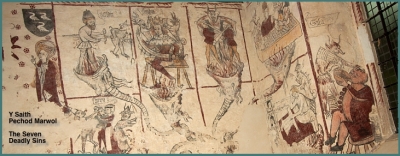
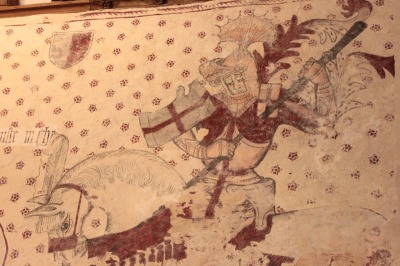
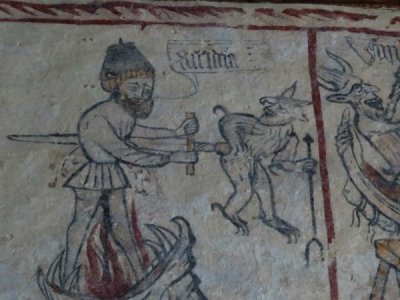
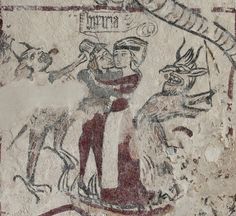
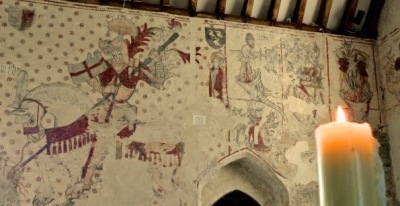
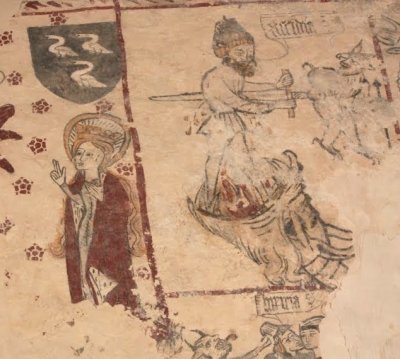

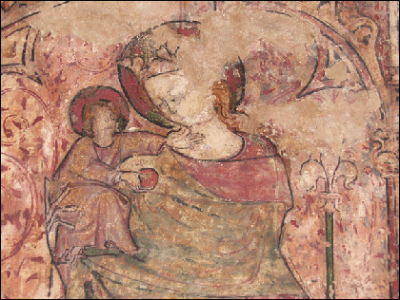

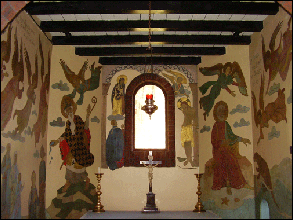
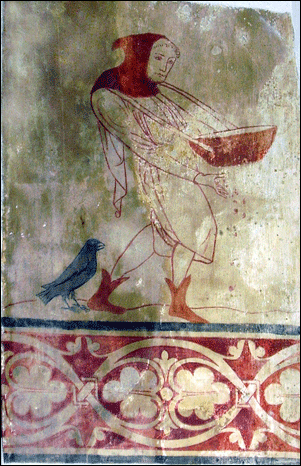
Fantastic works of art, it’s good to be able to preserve such works.
LikeLike